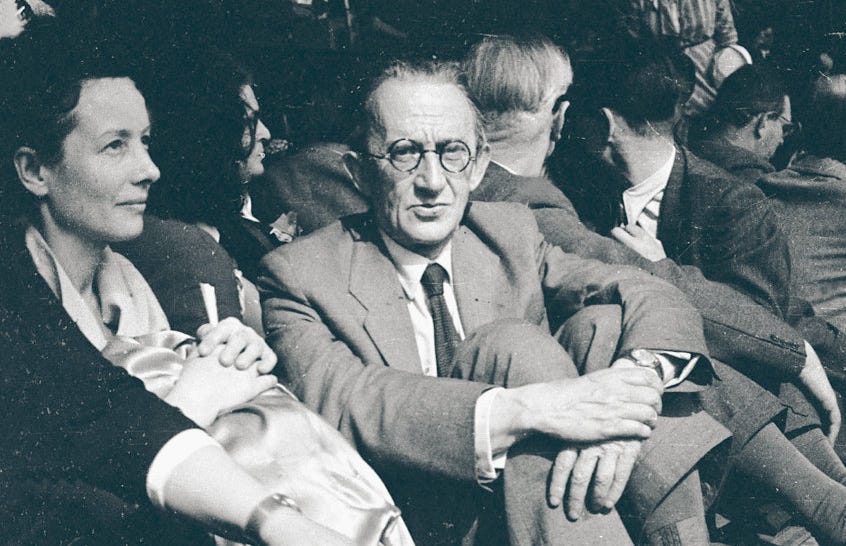Intellectual 'Sunday Circle' of artists comes to power in Hungary
After their brief reign, they generally slipped away to the West -- to the West's benefit
This is adapted from an early chapter of my unpublished manuscript: “The Will to Style: Utopian Radicals of the Weimar Bauhaus, 1919-1925.” -ts
Philosopher, social critic and literary historian György Lukács was the most high-profile member of the “Sunday Circle,” (Sonntagskreis) a discussion group that met during World War I in the Budapest home of film theorist and writer Bela Balázs.
Other members of the Sunday Circle included Friedrich Antal, Karl Mannheim, Arnold Hauser, Bela Fogarasi, Lajos Fülep, and Hungarian-American writer Anna Lesznai. The meetings were largely convened by Lukács, leading conversations that danced among various subjects — folklore, painting, history, etc. — before generally coming to rest on the subject of love; or “the philosophy of love,” as one remembered.
Both intellectuals opposed to the war, Lukács and Balázs launched the Sunday Circle to exchange ideas about Social Democratic alternatives to the despotic Austro-Hungarian Empire. Such ideas were igniting young people across Europe, from East to West, after 1916. The November 1918 fall of the Austro-Hungarian Empire liberated its former “crown” nations to develop independently on their own — or potentially so.
The road beyond revolution certainly wasn’t a smooth one for the crumbling empire’s largest members, Hungary and Czechoslovakia. In early 1919, Hungary’s left-wing Social Democrats and hard-core socialists were as divided as they were anywhere else, especially in Berlin. Very dissimilar to Berlin’s political spectrum on the Left, however, Hungary’s divided parties essentially handed the reins of government to the Communists, led by rhetorician Bela Kun. Like his counterpart Leftists who briefly took control in Bavaria, Kun promptly declared a new “Soviet-” or “Councils Republic” in Hungary. Spoiler: The leftist Hungarian Republic didn’t last a year.
During this brief revolutionary moment, however, people from Budapest to Paris and beyond were moved by bold dreams of an ideal social society — ideas that also spawned upstart experiments in modern literature, architecture, theater/film, and the graphic arts. During the final months of WWI and afterward, few could keep their eyes off the events in Russia — the fall of the czarist monarchy and the subsequent development of a new communist society by the victorious Bolshevics there. (These were militant leftists led by their commander, Vladimir Lenin, just returned from years of exile in Zurich, Switzerland.)….





